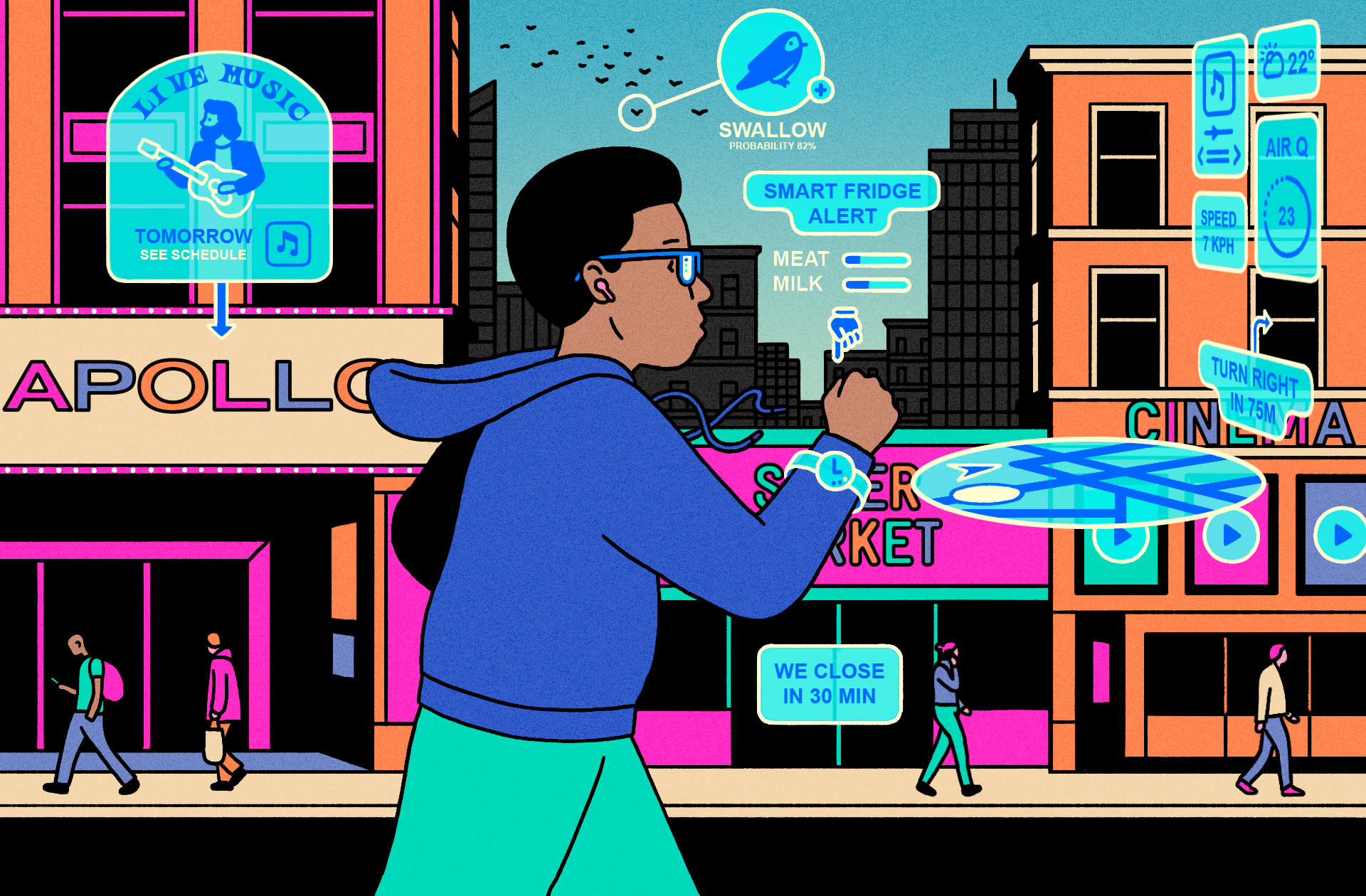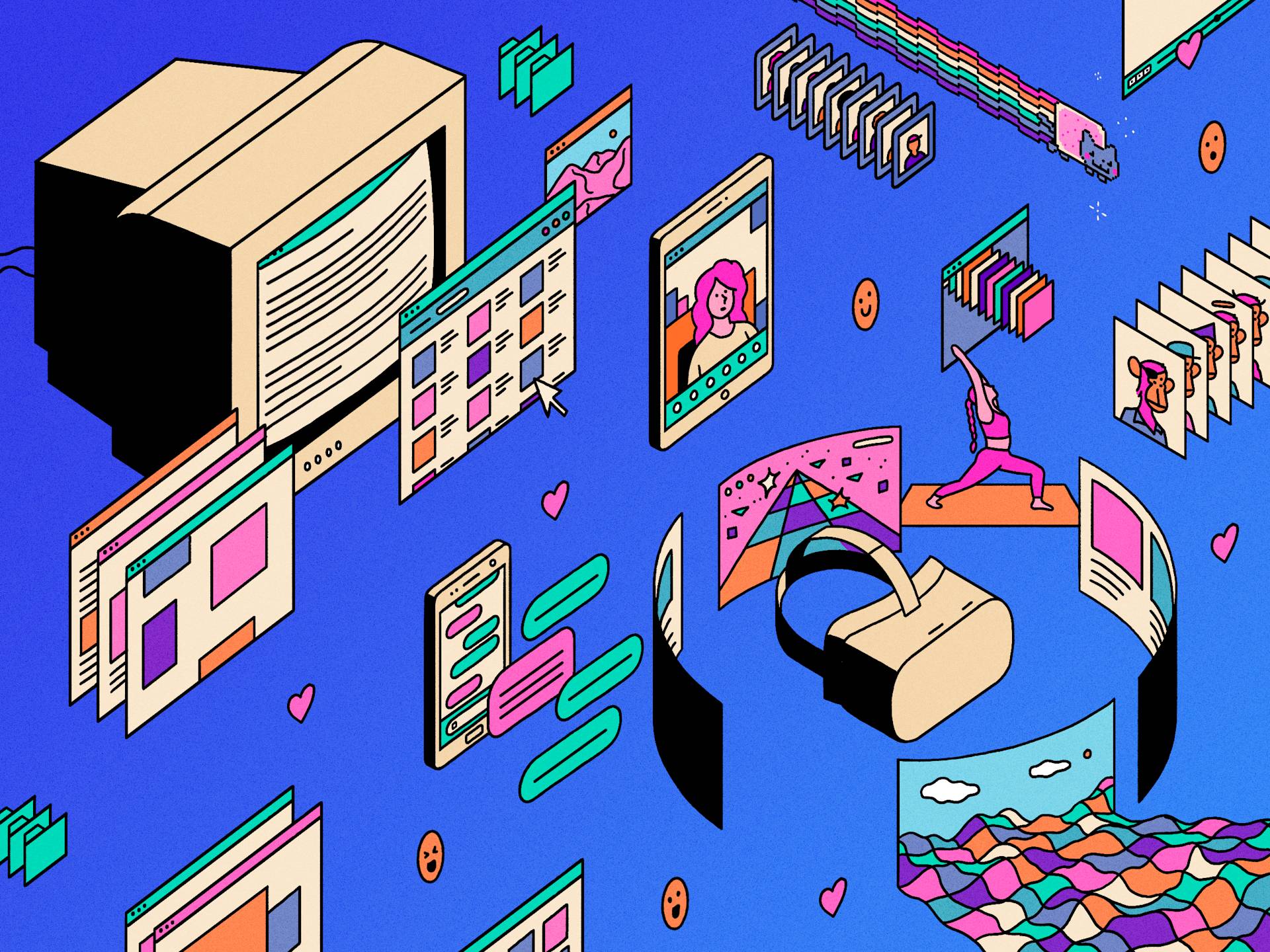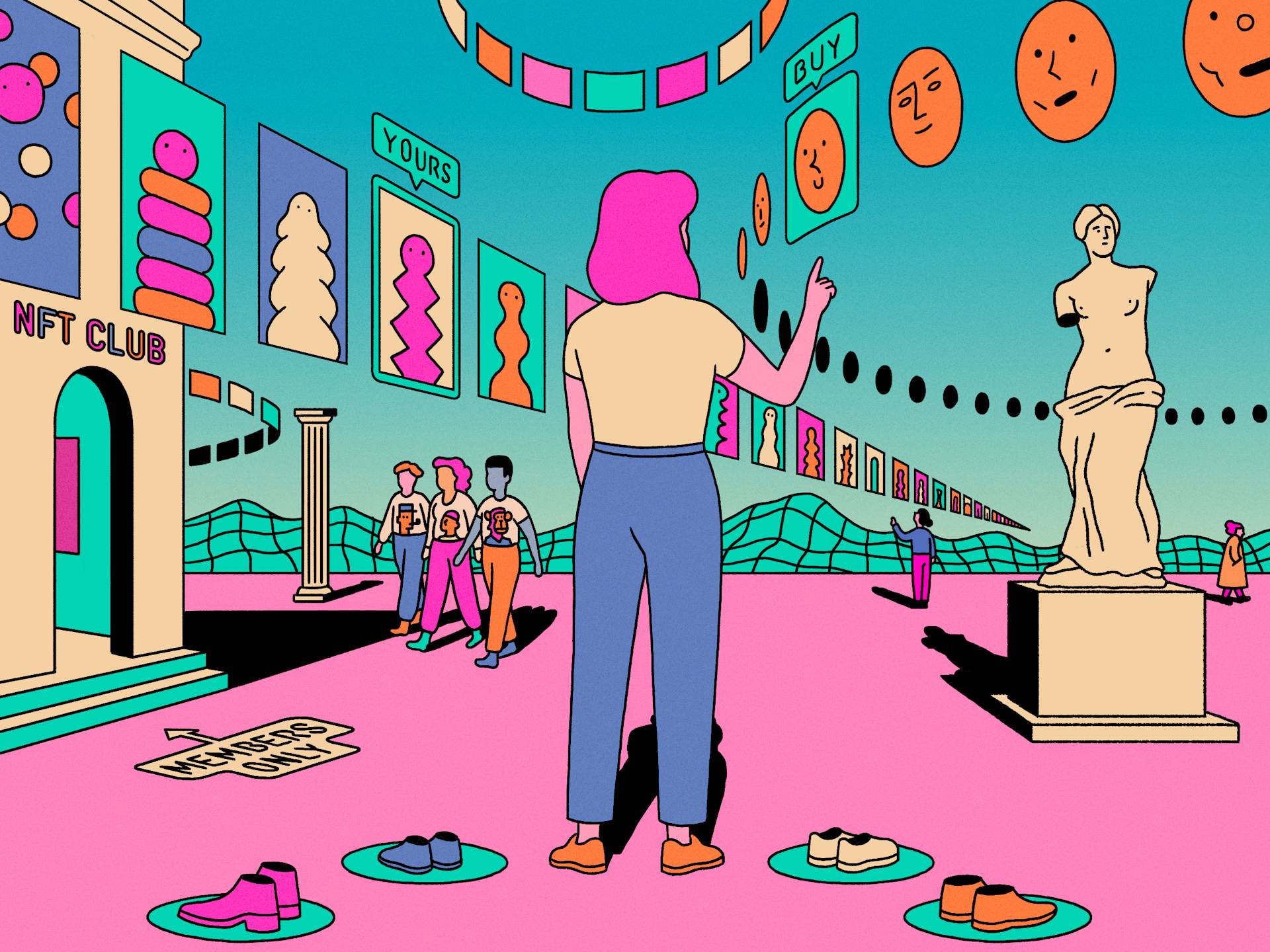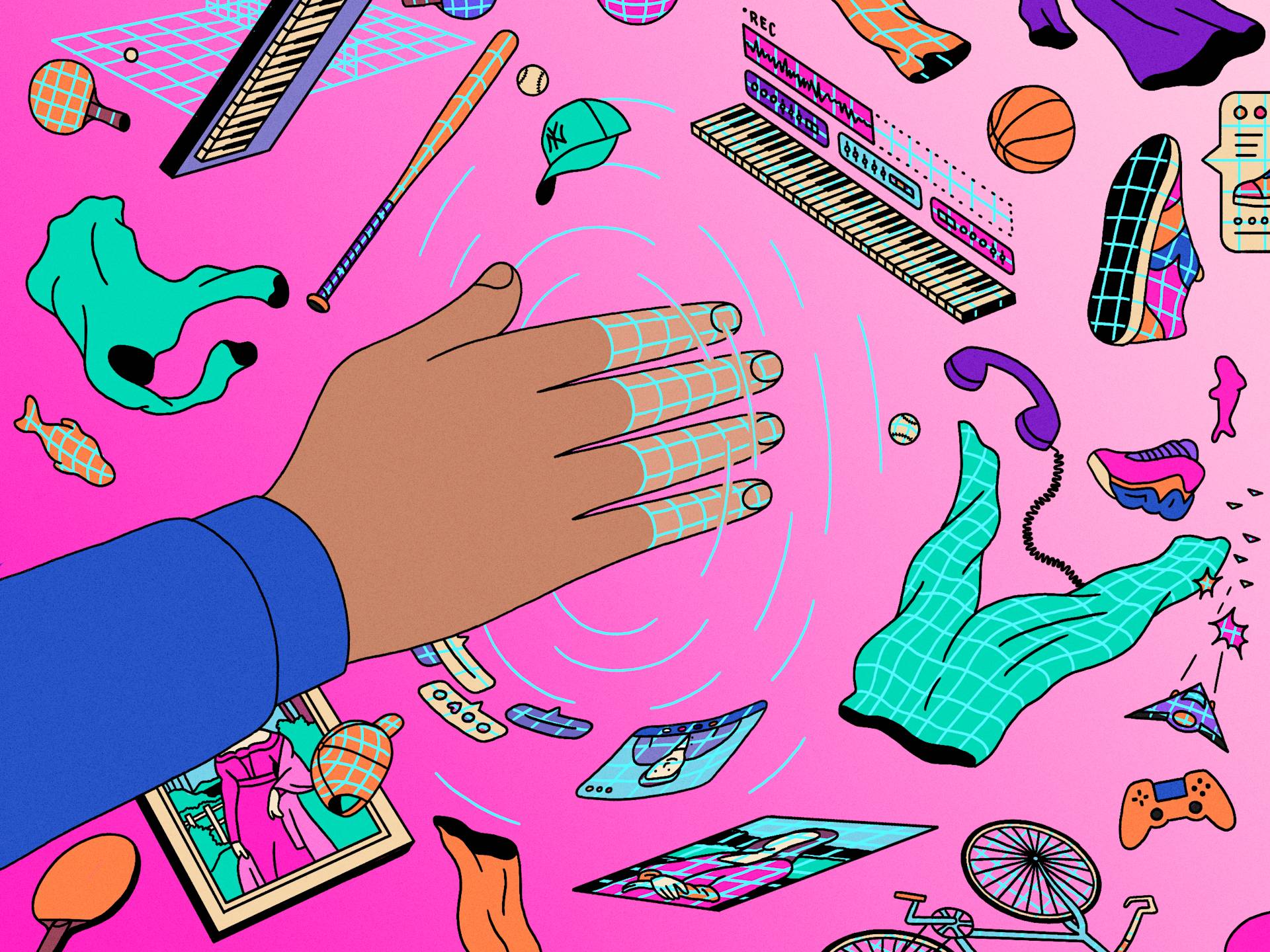The Great Overlap
A mindset to entering the Metaverse
10 min read

The provenance of new trends and technologies can usually be traced back to moments of innovation that coalesce into a bright new future.
The metaverse is no different, yet equally, it’s very different from any tangible future we’ve seen before. At present, there is a groundswell of technology and energy advancing the metaverse, spurred on by the creative opportunities and business advantages it’s deemed to offer. For some people, it presents the logical progression of the internet and the inevitable dawn of Web 3.0. For others, it manifests itself as a hazy clickbait distraction with disparate descriptions and no immediate relevancy.
Just as the adoption of the internet was a beacon for the bold and the adaptable in the ’90s, the metaverse provides a new landscape of undiscovered rewards and risks. By recognising and anticipating shifts in behaviours, the more open-minded will likely find greater success than those who remain steadfast to old wisdom in a new world.
Big hope or big hype?
There are dozens of projects that herald as pioneering benchmarks of the metaverse, from virtual worlds in Fortnite to Roblox, and BMW’s Joytopia experience to the recent opening of Horizon Worlds by Meta. Non-fungible tokens (NFTs) and the Blockchain are central to the possibilities, with headline-grabbing NFTs from Beeple, Damian Hirst and the Bored Ape Yacht Club capturing dollars as well as imagination.
For many, it is viewed as the next evolution of the internet itself – far more significant than just a new playground for a select few brands and quirky pioneers to embrace. To avoid involvement would introduce a Blockbuster-level existential risk. It is a concept where items, knowledge, and functionality could exist in multiple places, particularly those not of our own making. Similar to the real world, the metaverse has the potential to contain the best of what we offer and combine it with the best of what others provide, in a space where the customer wants it most.
All about the base
The foundations have existed for many years, with many steps to reach this point. Efforts towards technical integrations, single sign-ons, and the single-view of customers have coincided with the language of the internet maturing, the rise of MACH architecture and the Blockchain. Data has become more liquid, creating the scenario for genuine seamlessness across the internet. Our digital self can exist in multiple places just like our credit card can be used in various stores on the high street, and equally, you’re able to virtually interact with vast swathes of the internet with little pause for thought.
Accessing brands online via a single social media account, paying for products from a PayPal account or ordering an Uber from within Google Maps were, and are, early examples of the metaverse maturing within its cocoon. We’re now at the moment in time where that cocoon is cracking open to reveal colour, richness and depth we weren’t previously able to see.

The Great Overlap
The conjunction of physical and digital technologies, information and virtual identities is becoming easier for brands to engineer, and the benefits for customers are compound. From effortlessness to opportunity, the potential for more personalised and creative experiences is boundless. The overlap between digital to physical has intensified with greater effect for over a decade.
A precursor for the metaverse, the internet is where our virtual selves are on the precipice of harmonising and amplifying the physical world. As worlds overlap, so do the borders between brands. Just as they do in the physical world, collaborations become self-generating in the metaverse. The Marshall amplifiers on the stage of a show, the Armand de Brignac champagne in the cooler of a Rolls-Royce, the Spotify Wrapped playlist at a New Year’s Eve party – what services, data, assets or products are being provided to customers that would link perfectly with another in a virtual environment?
Twinning online
A digital twin of the physical world is being invisibly created. It is a virtual replica of the world we occupy with none of the physical constraints and all of the digital opportunities. Snap’s City Painter allows people to virtually paint graffiti on actual walls with digital paint, creating an alternate version of the world that can be seen through augmented reality. Much-loved characters also appear in augmented versions of our world, with the Fictioneers’ real-world Wallace and Gromit adventure ‘Fix up the City’, available in the UK and US. Consequently, physical and digital worlds are overlapping more regularly as our virtual selves – and personal digital twins – become more permanent, persistent, and holistic. The more we do so, the wider the population of the internet becomes.
What IRL space may a brand own with which to invite its audience if it existed as a digital twin? Perhaps a secluded headquarters, popular flagship or a temporary installation? 3D spatial data platform Matterport offers technology to recreate any physical environment as a digital twin by scanning a space in varying levels of fidelity. At the time of writing, Matterport has a digital library of 15 billion square feet of data.
A space is useful, yet people and spaces are naked without their adornments. From jewellery to clothing, furniture to vehicles, digital twins can be generated from anything the physical world offers, each with the ability to dress a person or a place across multiple environments. This is unlocked by the potential of NFT technology, from which the multi-million dollar headlines only scratch the surface.

The rise of digital ownership
NFTs are integral to the metaverse for multiple reasons. Their ability to serve as a certificate of authenticity over any code creates rarity to the point of a digital singularity. They demonstrate that we have access to or own all or part of something, and being able to attribute ownership of a unique asset allows brands to finally leverage digital scarcity, which generates value. Much has been made of NFT’s valuations, with headlines stating seven-figure bounties for digital art day after day. The reason why certain NFTs can reach astronomic value comes down to much more than a simple image.
Notorious NFT projects such as the Bored Ape Yacht Club, CryptoPunks and Loot offer something for their owners – utility. From complete IP ownership of the artwork to connections with like-minded communities or input into a yet-to-be-shaped global adventure game, the NFT’s real benefit is what they allow owners to access. The greater the value of the NFT’s utility, the greater its desirability, and the greater its price.
Before embarking on an NFT project, consider what an audience may wish to have access to or input into. The NFT itself acts as a ticket, or membership to an exclusive club or committee, where the fewer boundaries in place at the start the more attractive the proposition becomes. This isn’t to rule out the power of NFTs as utility-free items that are created purely for desire. As the metaverse matures the appearance of our digital selves in these environments will be as tailorable as our style IRL.
Owning an NFT of a piece of digital jewellery that’s a perfect digital twin of a physical item will, in the future, allow avatars to wear it in multiple environments. Imagine a couple wearing perfect replicas of their wedding rings as they battle together in Fortnite; gifting the ownership of gold jewellery at an Indian wedding held in a virtual space, or wearing Rose’s ‘Heart of the Ocean’ necklace from Titanic during a movie-night streaming party with friends. How may the products that a brand creates make appearances in these virtual worlds? What events can bring people together in the metaverse that would be elevated by an item a brand may be famous for?
Another use-case for NFTs is to prove our identity online. NFTs can deliver a system of trust that guarantees our identities and protects them, a benefit being the ability to reward loyalty and achievement. Brands may offer customers rewards that are truly singular in the digital world – from simple badges to augmented reality clothing only available to specific individuals. Perhaps this future is why Nike has continued its expansion into the metaverse by acquiring RTFKT for a reported eight-figure sum after less than two years of operating. How can brands reward their customers with exclusive rewards that overlap into more expansive worlds in the metaverse? How can they endorse one person within the metaverse and reimagine sponsorship beyond influencers?

Out of this world
Virtual replicas of the physical world offer spaces to communicate, play, shop and absorb new cultural expressions from anywhere on Earth. Yet the virtual world is a space for boundless imagination, where the mechanics of our physical world can be skewed and adapted to create a whole new space to meet, learn and play together. Imaginary worlds such as Decentraland are growing in population, with over 300,000 monthly active users entering this space to create, explore and trade with others in a unique environment. The Australian Open (AO) was the first major sporting event to successfully enter the metaverse by joining forces with Decentraland to offer more spectators the chance to virtually visit the Rod Laver Arena and experience the atmosphere of a grand slam final. Of the decision, Craig Tiley, the AO Tournament Director, said, “with this next wave of technology, global tennis fans will have the opportunity to be part of the 2022 Australian Open in a way never before available.”
Minecraft and Fortnite are arguably the most familiar of these virtual worlds though, with 141 and 350 million players respectively and their names recognisable even to the non-initiated. Powering these new worlds are the creative and engineering abilities of brands that have grown from gaming. Nvidia, Unity and Epic Games are headline brands developing software infrastructure that can create new open worlds. Epic Games’ Unreal Engine recently demonstrated its prowess with the ‘Matrix Awakens’ experience – a tour-de-force showcase of the possibilities of creating real-world simulations that are also completely original. Far from the saturated colours and playful nature of Fortnite (also powered by Unreal), the potential for alternative worlds that feel real could be useful for a range of brands and executions.
In what location, environment or open-world is it possible to entertain customers that feels realistic, even if it’s never existed? How could a space that doesn’t exist in the physical world allow a brand to introduce a new product with lower embargo risk, broader reach, and the opportunity to engage with every individual in attendance on their terms, time zone, and language? If creating the environment from scratch is prohibitive, in which existing space of the metaverse could anyone build an environment?
Taking the first steps
Just as with the internet, there are a multitude of access points. From VR and AR headsets to the humble mobile device, the metaverse is scalable in its touchpoints.
eSports platform Zwift demonstrates the possibilities of the metaverse with familiar technology. Zwift has built a series of virtual worlds that offers more than 200km of road to runners and cyclists by connecting a bike, smart trainer or a treadmill to a laptop or iPad. The unicorn business has grown a community of amateur and professional runners and cyclists who converse, train, and compete in a shared environment. Its impact transcends the virtual, with the annual Zwift Academy using the virtual world to find the next best cycling talent and award them contracts with professional teams. There is also a growing possibility that Zwift racing could be included in the 2028 Olympics, legitimising the sport of virtual racing and opening opportunities for fans to experience the same world. It poses the question of how other businesses might be able to take advantage of overlapping with moments such as these?
In the same way, the iPhone revolutionised our connection to the web, the latest VR and AR technologies are leading the way forward in the metaverse stakes. Nike recently created NIKELAND in Roblox, intended as a place for Nike fans to connect, create, share experiences and compete. Much more than a forum and a game, visitors can transfer offline movement detected IRL in the accelerometers of their mobile devices to unlock bonus moves in games. The opportunity for adjacent brands to overlap with this world offers new possibilities for their own roadmap. Whether endorsed by Nike or as a guerrilla activation, how might brands like Strava, EA Sports or Apple introduce themselves into this new open world and amplify the experience?

Digging to greater depths
The biggest challenge of such a new opportunity is to look deeper than the clickbait stories and beyond the short-term PR stunts and noise. The landscape is changing before us, and the chance to contribute to the iconic worlds that will define the next digital revolution is within everyone’s physical and virtual grasp. From the tiny to the enormous, creating borderless products will not only improve the experiences of customers – whether that’s to make lives easier, safer or happier – it will also shine a light on a new world that’s open-ended, interactive and participatory when it comes to user experience, where loyalty is driven by novel co-creation opportunities that transform ordinary consumer transactions into interactive experiences. For this reason, brands must seek to comprehend the psychology behind why the metaverse so entices people because the opportunities are endless, and the scope for experiences to harness customers’ self-expression and creativity is unlike anything we’ve previously known.
Embracing change
This is the metaverse. A place where we can exist as true versions of ourselves and play games, meet people, shop for our favourite items and enjoy experiences never to be repeated. From concerts to exhibitions, sporting tournaments to private gatherings, the memories generated in the metaverse will be as real and as personal as those developed in the real world.
The metaverse and the era of the great overlap are ahead of us. At its heart lies a mindset that walls are now doorways – that collaboration benefits brands and individuals alike. We have the opportunity to break through physical barriers and create experiences as culturally renowned and long-lived as Woodstock – the legendary concert held in 1969 with a legacy self-perpetuating in culture ever since. The next cultural ‘you had to be there’ moment that defines a generation may very well happen within the metaverse.
In 2021 more than one million people tuned in to watch Ariana Grande perform in Fortnite, yet numbers aren’t everything. Do more brands have the ambition to create a moment in the metaverse so exclusive and desirable that people will talk about it for years to come? Does it seize the opportunity to give one individual in a crowd of millions an unforgettable moment that makes their experience special just to them? And will that moment be referenced in pop culture for even longer?
Illustrations by Fabien Roché.
All opinions expressed throughout this article are the author’s own and do not necessarily represent those of AKQA or its affiliates.